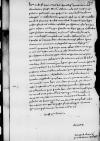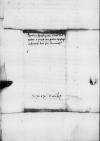List #4538
Georg von BAYSEN (BAŻYŃSKI) do Ioannes DANTISCUSMewe (Gniew), 1534-12-29
| odebrano [1534]-12-29 Rękopiśmienne podstawy źródłowe:
Pomocnicze podstawy źródłowe:
Publikacje:
| ||||||||
Tekst + aparat krytyczny + komentarz Zwykły tekst Tekst + komentarz Tekst + aparat krytyczny
Reverendissimo in Christo Patri et Domino, domino
Reverendissime in Christo Pater et Domine, domine observandissime.
Servitiorum meorum commendatione praemissa.
Cum nuntiata mihi fuit mors magnifici
Feci igitur minutum praesentibus inclusum, quod Reverendissimae Dominationi Vestrae limandum transmitto et precor, ne gravetur perspicere et boni consulere ac limatum reverendissimo
Esset quidem, ut quilibet scriberet per se, sed multae litterae taedium afferunt. Si posset fieri, ut nos omnes unis scriberemus litteris, utcumque Reverendissima Dominatio Vestra consuluerit, ita gratum erit, saltem ne moremur. Civitates etiam hortabor ad scribendum.
Cum his me Reverendissimae Dominationi Vestrae me commendo, quam felicissime valere hoc instanti anno opto et superinscribed⌈etet superinscribed⌉ ut prosper, felix faustusque sit.
Ex
Eiusdem Reverendissimae Dominationis Vestrae obsequentissimus


 AAWO, AB, D. 5, f. 104v
AAWO, AB, D. 5, f. 104v